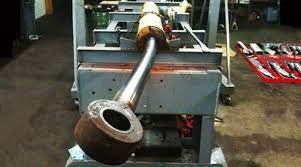Elevate your lifting operations to unprecedented heights with the ML40 Mini Hydraulic Gantry
In the realm of heavy lifting technology, where precision, safety, and versatility are paramount, the ML40 Mini Hydraulic Gantry System stands tall as a beacon of innovation. Part of the ML-Series, this compact yet robust system redefines the landscape of heavy lifting with its myriad of advantages. Let's delve into what makes the ML40 a game-changer in the industry
Safety First:
Safety is not just a feature; it's the cornerstone of the ML40's design. Equipped with stroke synchronization, this system ensures a level lift regardless of load distribution. The PLC controlled lifting, coupled with feedback from a stroke encoder, guarantees even height on all legs. Moreover, the system possesses the intelligence to halt the lift if necessary, preempting potential issues and prioritizing safety above all.
Unrivaled Capacity:
Despite its compact size, the ML40 boasts an impressive lifting capacity of 45 tons at full extended lift height. This means that even in confined spaces, the ML40 can elevate heavy loads with ease, making it the go-to choice for a myriad of industrial lifting needs. Its ability to lift full capacity to a height of 18 feet underscores its versatility and sets it apart as a market leader.
Unparalleled Compactness:
One of the standout features of the ML40 is its compact design. Easily maneuverable and capable of fitting through standard doorways, this gantry system transcends spatial constraints. In industrial settings where space is at a premium, the ML40 reigns supreme, effortlessly navigating through tight spaces where other gantry systems falter. Its ease of movement and setup further accentuate its practicality and efficiency.
Efficiency Redefined:
Powered travel, under load, is standard on all ML40 models, offering unparalleled utilization. The three-stage, double-acting cylinder provides extended lifting capacity, ensuring that no task is too daunting for this powerhouse of a system. The handheld pendant control, capable of operating four legs simultaneously, simplifies operation, enhancing efficiency and streamlining workflows
Versatility Personified:
The ML40 is not just a standalone system; it seamlessly integrates with standard Enerpac gantry accessories, expanding its capabilities and adaptability. Whether it's a bespoke lifting solution or a standardized application, the ML40 rises to the occasion, catering to diverse needs across industries.
Reliability and Compliance:
Operating on 115 or 230 VAC single-phase power, the ML40 epitomizes convenience without compromising on performance. ASME B30.1 compliance and rigorous load testing under the watchful eye of Lloyd's Register underscore its reliability and adherence to industry standards. In conclusion, the ML40 Mini Hydraulic Gantry System stands as a testament to innovation, efficiency, and safety in heavy lifting technology. With its compact design, unrivaled capacity, and unwavering commitment to safety, the ML40 redefines the paradigm of heavy lifting, empowering industries to achieve greater heights with confidence and ease. Whether it's navigating tight spaces or elevating heavy loads, the ML40 stands ready to tackle the most demanding lifting challenges, setting new benchmarks in the industry.
The ML40 Mini Hydraulic Gantry System, available through Northland Air Hydraulics Ltd.
As the premier destination for heavy lifting technology, Northland Air Hydraulics Ltd. offers not only top-of-the-line equipment but also unparalleled expertise and support. With the ML40, you're not just investing in a system; you're investing in peace of mind. Our team is dedicated to ensuring that your lifting needs are not just met but exceeded, with safety, efficiency, and reliability at the forefront.
Contact us today and let us guide you towards a lifting solution that's tailored to your specific requirements. Unlock the potential of your operations with the ML40 from Northland Air Hydraulics Ltd. where excellence meets innovation.
For a Consultaion Contact Northland Air Hydraulics Ltd.
780-466-1172
nrldair@telus.net
northlandairhydraulics.com






















